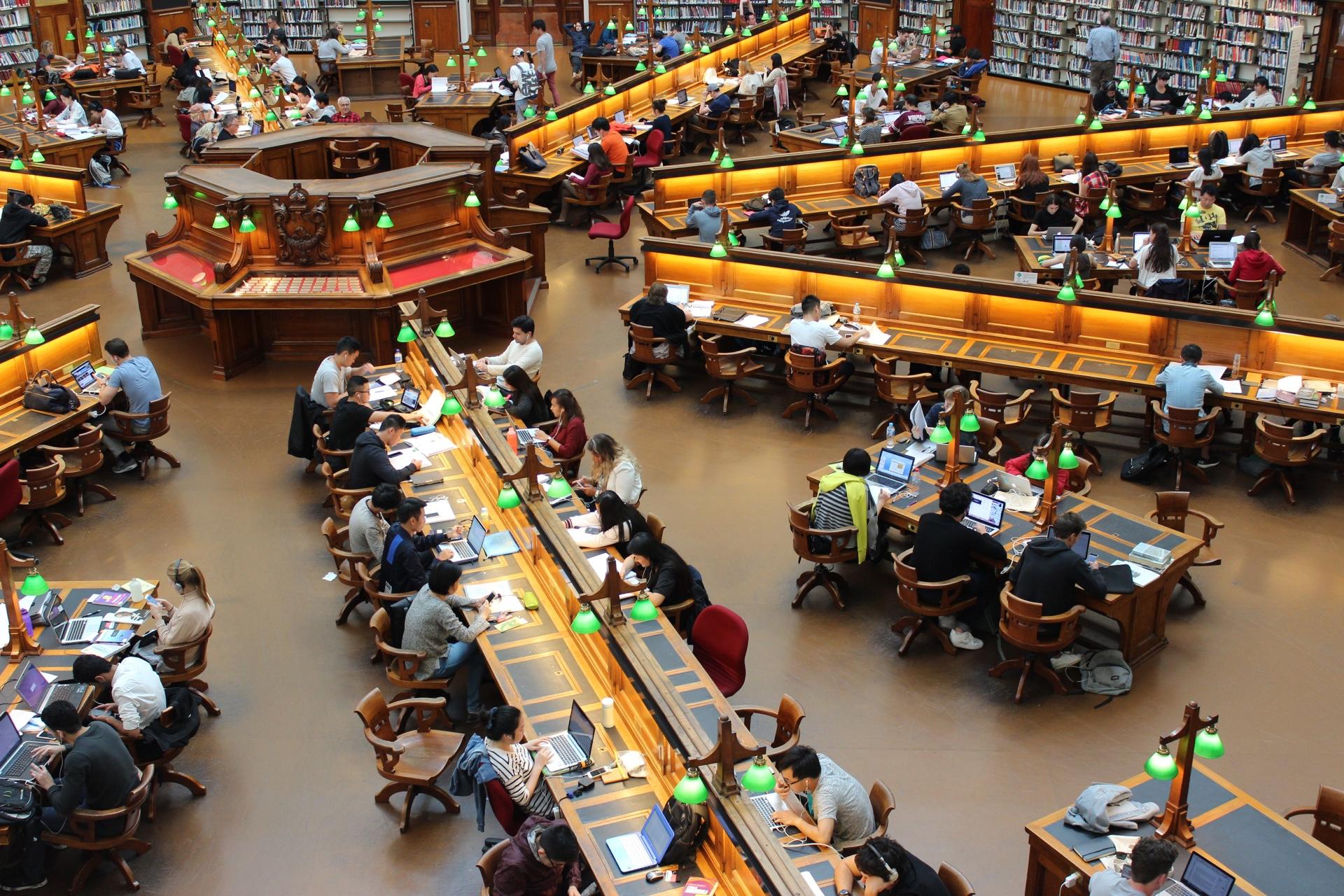
In the past, people - and especially college students - took libraries for granted, and used them regularly. But today, people are increasingly using the Internet in place of libraries, in spite of the Internet being a place of poor quality information. This has led to libraries experiencing budget cuts, and in some places, closure. As a result, college students' assignments are increasingly suffering from ineffective research and poor quality sources.
College students have long had access to high quality information through using their college or university libraries. This has been reflected in the quality of their assignments. But since they have been increasingly turning to unreliable websites on the Internet, their assignments have been receiving poorer grades.
Goodall and Pattern (2011, p. 163) define the declining use of libraries by students in these terms: "Low use, during the academic year, is defined as less than five visits to the library or borrowing less than five books, or logging in to the university's electronic resources collection less than five times." Goodall and Pattern's definition shows how serious the problem of declining library use is, and how college students' work is suffering because they are not using libraries for their assignments or for homework help. They back up their definition by stating the problem of declining use of libraries by college students: "These are staggeringly low levels of use when one considers what is required to write a single essay and raise concerns about how far students are sharing materials with one another and how acceptable this is, the reliance on internet sources, and even whether students are citing materials they are not accessing" (Goodall and Pattern, 2011, p. 163).
All of these factors play a role in students accessing the library less, but access to the Internet seems to be the major factor due to its convenience, easy access to it, including from home, and poor information literacy skills ensuring that any Web source will be used regardless of its accuracy or truthfulness. The result is students receiving poor grades on their work. The worst part of this is that they do not know why.
If college students asked their professors why they are getting bad marks on their assignments, they would know that the most likely reason is their poor research methods. After this, students will naturally ask "What is wrong with using the Internet as a research source?" Many professors have been asked this question in the course of their careers, and the answer is that the Internet carries a vast amount of low quality information. It presents information that has not been fact-checked or screened for accuracy before being posted, for which no author or publication date has been given, comprises websites that are here one day and gone the next, and lies and misinformation on subjects. It also features information that is biased or one-sided on issues, and otherwise does not present a fair, objective point of view. Research requires objective information, and needs to present both sides of an issue to succeed. It should also be written by and documented by experts in their field.
This is where libraries, usually bypassed as sources of information by Internet-savvy students, come in. They provide high-quality, accurate, fair, and objective information for students' research. They also teach information literacy to students who otherwise would not have an idea of how to check a source for accuracy or the difference between print and Web sources. Professors who familiarize their students with the library by giving them tours of it, and who teach information literacy to them by sessions on it there are teaching them the skills that will enable them to identify the difference between high and low quality sources, and how to select high quality sources for assignments. Students who use high quality sources are more likely to receive good grades on their assignments. The sources for good, high quality information are libraries.
Soria, Fransen, and Nackerud (2013, p. 154) back up these findings by stating that "students who use the library had an average GPA of 3.18 compared with the average GPA of students who did not use the library, which was 2.98". If library use affects students' GPAs as dramatically as shown here, then students should be using the library for their research. This fact shows that students who use the library learn good research and information literacy skills, and this is reflected in the grades they receive for their assignments. It is a testament to the power of libraries to change people's lives for the better, and to improve students' grades.
References:
- Goodall, D., and Pattern, D., 2011. Academic library non/low use and undergraduate student
achievement: A preliminary report of research in progress. Library Management,
[e-journal] 32(3). Available through: Fairmont State University library website [Accessed 12 April 2016].
- Soria, K.M., Fransen, J. and Nackerud, S., 2013. Library use and undergraduate student
outcomes: new evidence for students' retention and academic success. portal:
Libraries and the Academy [e-journal] 13(2). Available through: Fairmont State University library website [Accessed 12 April 2016].